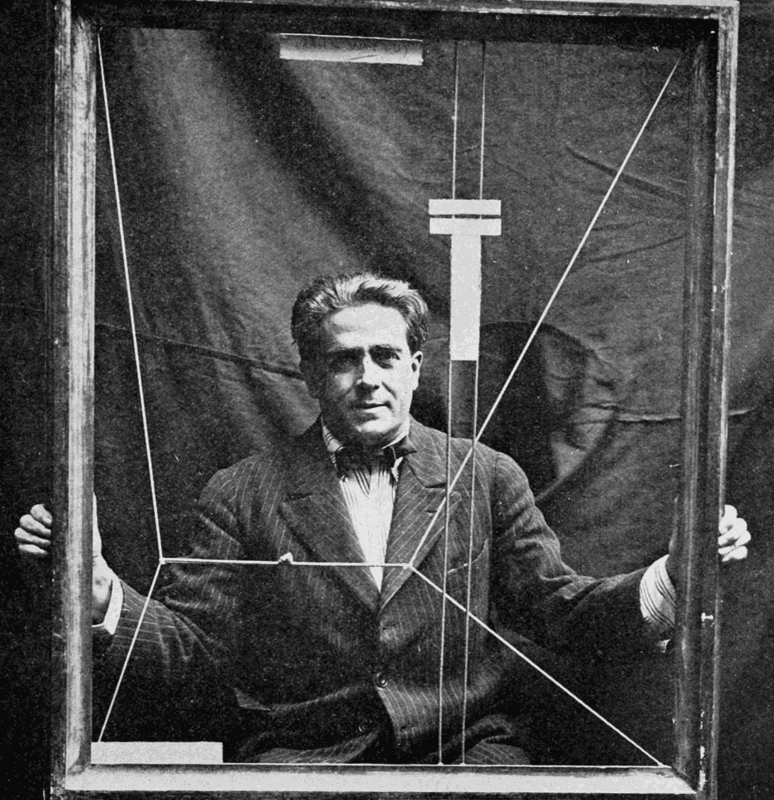Francis Picabia (1879–1953) was a French avant-garde painter, poet, and typographic artist known for his diverse and experimental approach to art. He played a significant role in several major art movements, including Dada and Surrealism, and his work continues to influence contemporary art.
Francis-Marie Martinez Picabia was born on January 22, 1879, in Paris, France, to a Cuban-Spanish father and a French mother. His father was a successful businessman and his mother came from a noble French family. Raised in a wealthy and culturally rich environment, Picabia had early exposure to the arts.
Picabia began his formal art education at the École des Arts Décoratifs in Paris in 1895, where he was influenced by the Impressionist and Post-Impressionist movements. His early works were predominantly landscapes in the style of Camille Pissarro and Alfred Sisley.
Picabia's early works, from around 1903 to 1908, were primarily Impressionist in style. He achieved early success with his Impressionist landscapes and was regularly exhibited at the Salon d'Automne and the Salon des Indépendants. However, by 1909, Picabia began to seek new artistic directions, moving towards a more modernist and abstract style.
By 1911, Picabia had joined the Puteaux Group (Section d'Or), which included artists like Marcel Duchamp and Fernand Léger. This group was focused on Cubism and Orphism, and Picabia began experimenting with abstract forms and the use of geometric shapes and vibrant colors. His work from this period reflects his interest in modern technology and machinery, which would become a recurring theme in his art.
Picabia is perhaps best known for his role in the Dada movement. In 1915, he traveled to New York City, where he became an integral part of the burgeoning Dada scene. Collaborating with Marcel Duchamp and Man Ray, Picabia contributed to the formation of the American Dada movement. His works from this period include mechanical drawings and machine-inspired abstractions, such as his famous "mechanomorphs," which portrayed mechanical objects as symbolic of human emotions and experiences.
In 1917, Picabia published the first issue of his Dada magazine, 391, which featured a mix of art, poetry, and critical essays. The magazine became an influential platform for Dada ideas and was published intermittently until 1924. Picabia's Dada works often incorporated ironic and satirical elements, challenging traditional notions of art and culture.
In the early 1920s, Picabia moved away from Dada and became involved with the Surrealist movement. He maintained his rebellious spirit, often clashing with leading Surrealists like André Breton. During this time, his works featured more figurative elements, combining dream-like imagery with erotic and provocative themes.
By the late 1920s, Picabia had distanced himself from Surrealism and began exploring other styles, including figurative painting, abstract art, and even photorealism. His ability to constantly reinvent his style made him a unique figure in the art world. Some notable series from his later years include his "Transparencies", layered paintings that created complex, multi-dimensional images, and his provocative, kitsch-like nudes from the 1940s.
Picabia's personal life was as colorful and unconventional as his art. He was married four times and had numerous relationships. His flamboyant lifestyle and sharp wit made him a central figure in the avant-garde circles of Paris and New York.
Francis Picabia died on November 30, 1953, in Paris, leaving behind a diverse and influential body of work. His legacy is marked by his constant innovation and refusal to be confined by any single artistic movement or style. Picabia's contributions to Dada, his exploration of abstract and mechanical forms, and his later figurative and Surrealist works have cemented his place as a pivotal figure in the history of modern art.
Francis Picabia's career was characterized by relentless experimentation and a refusal to adhere to conventional artistic norms. From his early Impressionist landscapes to his mechanistic Dada creations and provocative Surrealist paintings, Picabia's work continually challenged and expanded the boundaries of art. His legacy endures as a testament to the power of artistic innovation and the importance of challenging the status quo
